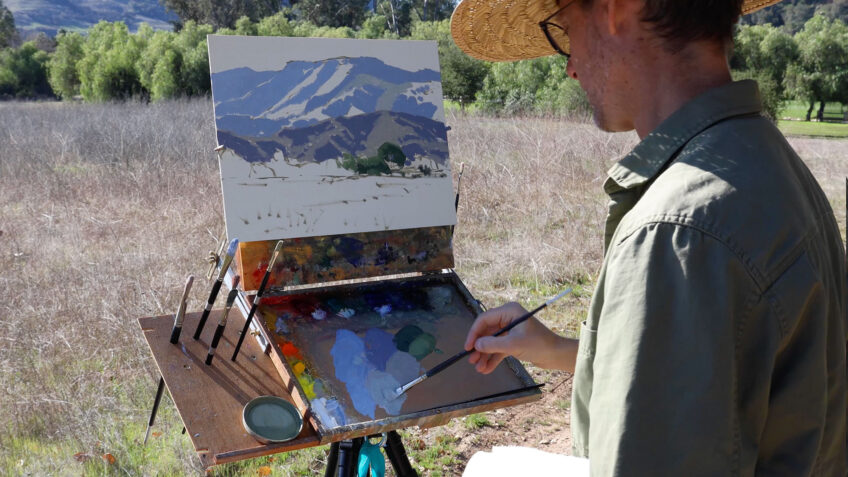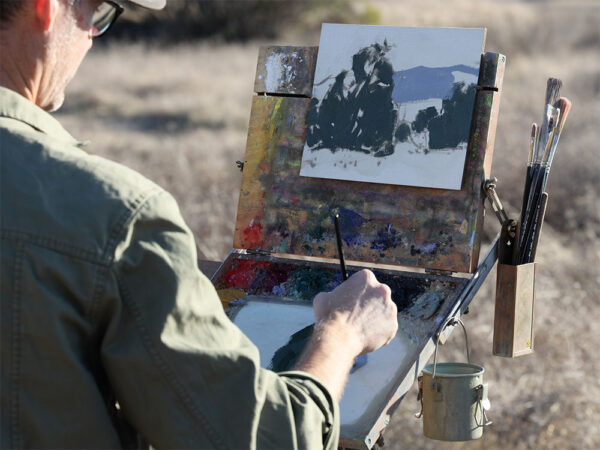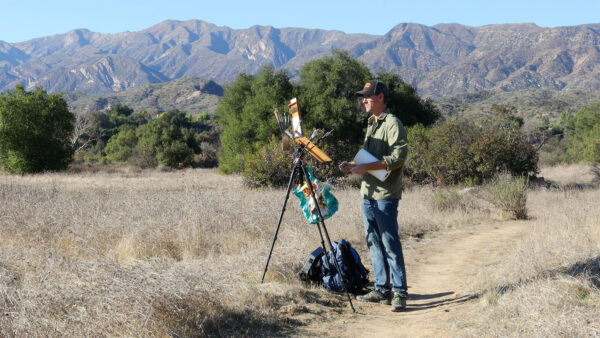I’ve had the pleasure of participating in quite a few plein air painting events over the years. If you’re not familiar with plein air events, they usually invite artists to paint outdoors in a particular region for a few days or weeks, followed by a show and sale of the newly-created paintings.
From events in the rugged Rocky Mountains of Colorado and Wyoming, to North Carolina, the Grand Canyon and the California coast, I’ve enjoyed capturing on-the-spot records of what I’ve seen.
By the way, I regularly talk to people who mistakenly think that plein air is a particular style of painting. While some plein air paintings can have definite similarities, they are mostly due to the fact that the artists painted them outdoors on location. Painting en plein air is a French expression meaning “in the open air.” It’s not so much a style as it is the effects of the weather, changing light and time constraints on the artist.
So why do artists paint en plein air in the first place?
Five Reasons to Paint Outdoors
- More accurate recognition of colors and how they compare to each other
- Simplifying your painting process and technique
- Improving the ability to paint accurately in a shorter time frame
- Studying firsthand how light behaves in diverse situations
- Developing the ability to convey the feeling of the place you’re painting
I attribute my own personal growth in each of these areas to my continual efforts to paint outdoors. In fact, I don’t think you can effectively learn #4 or #5 any other way.
For artists new to plein air painting, I’ve posted an article listing all of my plein air materials and equipment. I recommend using small canvases (6″ x 8″ or 8″ x 10″) and avoiding subjects that are too complex. Try a few distant scenes first, focusing on the values and colors of the big shapes. If you’re interested in learning an effective step-by-step approach, check out my Steps for Successful Plein Air Painting DVD. Viewers continue to contact me to express the positive impact the DVD has had on their thinking and process. Established artists across the country have also given it some great endorsements. I also have developed my Landscape Painting Fundamentals online video course which provides even more details on my process of landscape painting.
Painting in plein air events has the added benefits of camaraderie with other participating artists and the chance to paint in areas that are normally far away from your studio. But of course, there’s also a certain amount of stress caused by the looming deadline — having to turn in finished paintings for the show at the end of the week.
Whether you plan to enter plein air events or not, the exercise of painting outdoors will almost certainly help you improve your paintings. So get yourself out there!



8 Responses
Ed
Dan, thanks for your advice once again! Your five reasons are right on mark! Now l just need a jab in the keester (so?)!
Dan Schultz
No time like the present, Ed! 🙂
Doug
Your five points are excellent Dan. I would add to them the joy and reward of being outdoors. The fluctuating sense of motion in the air (even if sometimes too much or too little), the sounds of birds, waves, distant human activity, and associated smells of mowed grass, sea salt, and earth that all change with the time of day and month of year are the essence of what gets me out there. Whether I’ve managed to capture some of that in my painting or not, when I look at my work the memory of the “meditation” returns. That memory is the gift.
Dan Schultz
Very well said, Doug. I completely agree! The experience of “being there” is one that can’t be substituted.
Gayle Martin
You comments are right on point, Dan. Being in the environment of the actual subject lends itself to inspiration hard to duplicate in painting landscapes in the studio. Feeling like a part of it all is a joyful experience. Learning from the experience gives depth to our thoughts.
At least that’s what I think about plein air painting…..
Dan Schultz
I like the way you put that, Gayle. Being in the environment and learning from the experience. Thanks for commenting!
Jan
I like how we have the timing constrain of painting outdoors. It forces you not to fiddle around to much. After a few times painting you know just how much effort you have to get into it before the shadows have changed to much. The concentration and problem solving is much like rock climbing.
Also can’t beat having wildlife come by. Like your bobcat and I had a very large wild pig walk by the other day.
Plein Air Painting: Why Paint Outdoors | Art Tutorial | Mastrius
[…] light and weather conditions. While this may be frustrating at first, it’s also an opportunity to learn to paint quickly and confidently. When you’re plein air painting, you don’t have the luxury of time, so you learn to make […]